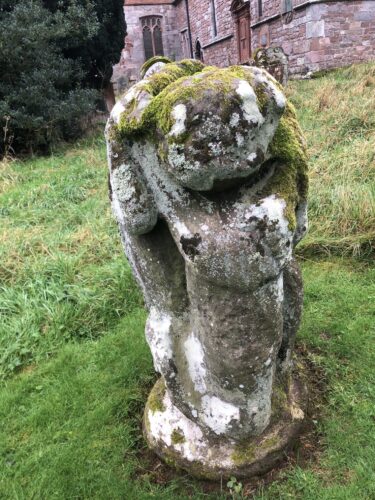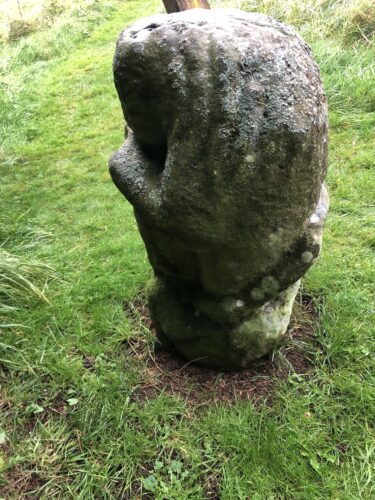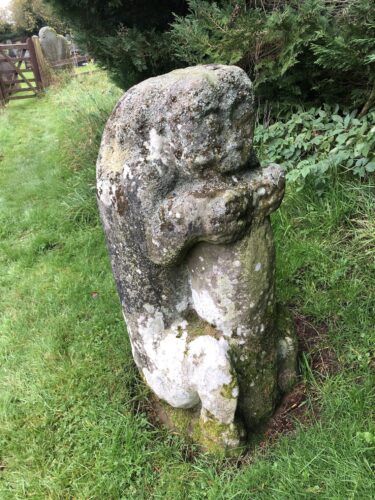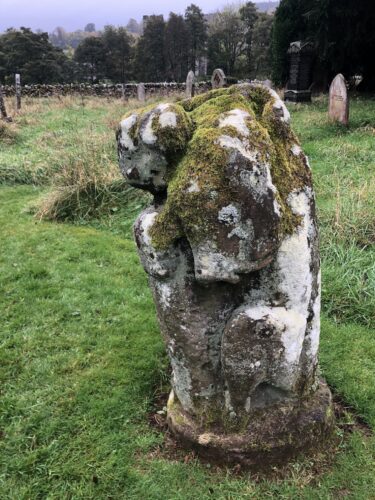In October 2023 I followed a lead from a flier I picked up the Lake District in Cumbria, in the far north of England. The flier wrote about there being four mysterious stone bears tucked away in an old church graveyard. This caught my eye and with a free day at hand I set off in pursuit of these bears!
As I rounded a corner on a small windy road, I faced a row of hills. Suddenly the vista opened up and literally took my breath away. A patchwork of green fields led to misty distant hills. The air was infused with peace.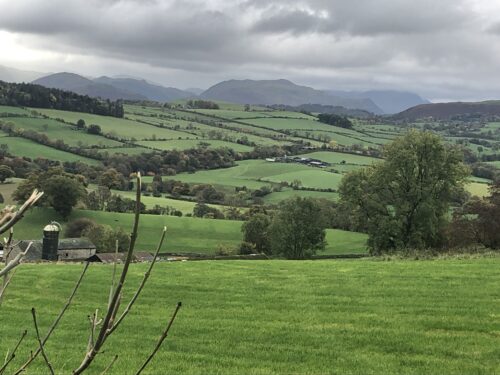
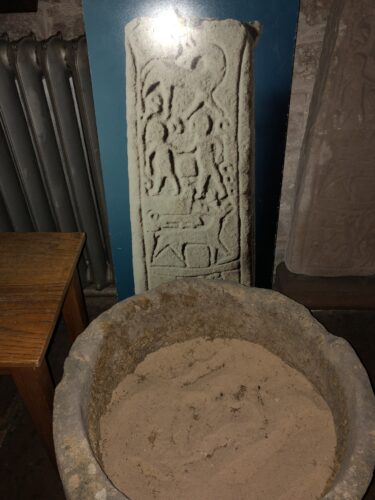
I felt a quickening in my heart as I drove the last few miles to St Andrews Parish Church. It nested by a stream in the picturesque village of Dacre. My first saunter round the old churchyard did not yield four stone bears. I entered the church and to my surprise learnt that Viscount William Whitelaw lies buried in the graveyard and that this was his home territory. He was a controversial figurein Thatcher’s government when I was growing up. He was undoubtedly a dedicated politician with a strong notion of service of his country. In fact the whole ambience of the countryside here has a settled air that lends itself well to conservatism. There was a beautiful window dedication to him in the church too that you can see on this page. Then I found fragments of Pictish stones that at least could be ascribed a date of between the ninth and tenth century.
But what about the bears you may be asking? The bears are ageless and worn and are in four different stances which the guide book describes as follows:
- North West Corner – a sleeping bear with his head resting on top of a pillar
- South West Corner – a small animal has jumped onto the bear’s back – the bear has turned his head as if awakened
- South East Corner – the bear is attempting to dislodge this animal
- North East Corner – the bear appears to have eaten the animal and looks extremely satisfied
The above description is an interpretation from 1890 and may need updating…..The guide book goes onto explain that some scholars believe the figures are of pre-Saxon origin and mark the boundaries of some “pagan site”.
I will include the four bears here for you to decide how old they and why they are in a Christian graveyard. Also some believe they are not bears at all. They reckon they are lions. The bear was an old Celtic symbol set at a time when bears still occupied their lands. The lion to me is less likely as it was not indigenous to Britain and probably not encountered until colonial times.
